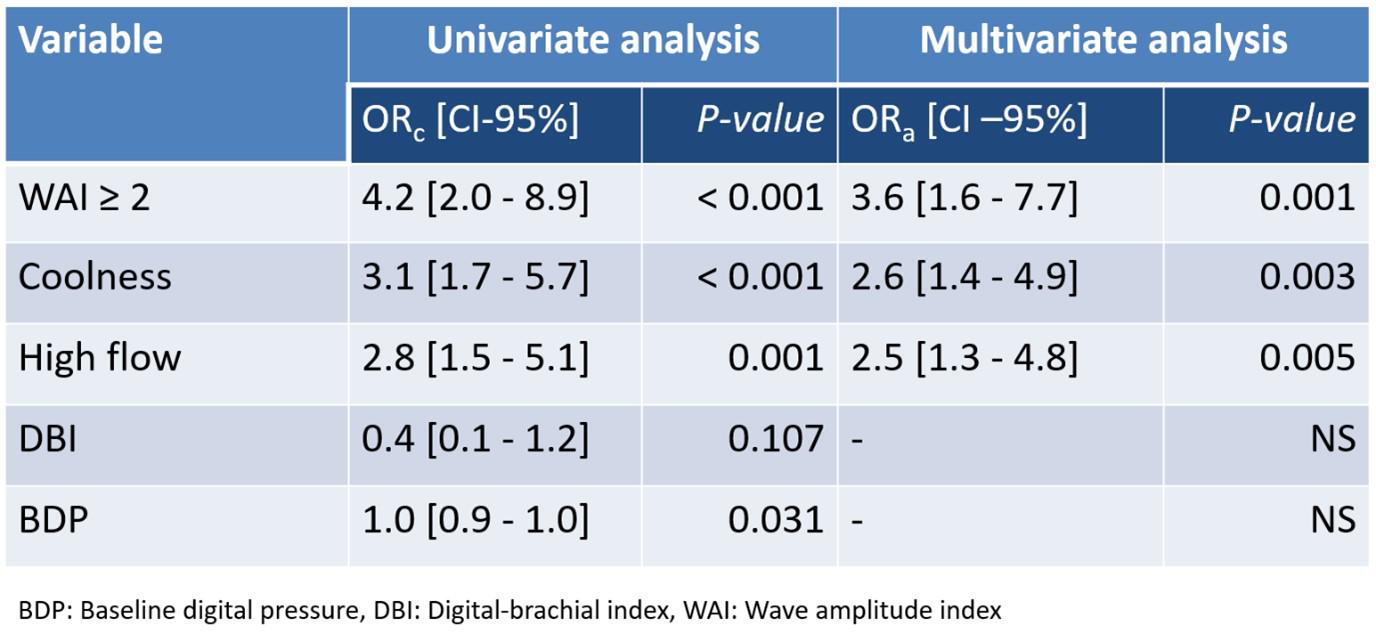OBJECTIVE- To quantify digital pulse-wave amplitude (PWA) changes with access compression in patients with dialysis access-related hand ischemia (ARHI) and investigate influence on treatment strategy.
METHODS- Included patients presented with symptoms of ARHI. Digital PWA was measured using a photoplethysmography sensor placed on the second digit before and during manual access compression and a wave amplitude index (WAI) calculated as the ratio of the latter to baseline value. Patients' clinical characteristics were studied, and logistic regression was performed to investigate the association between WAI and progression to a flow-targeted intervention at 90 days.
RESULTS- Our cohort comprised 322 subjects with a mean age of 60±13 and a median access age of 9 months. Upper arm accesses were reported in 67% and arteriovenous grafts in 16%. All patients were symptomatic with paresthesia being the most common symptom (68%). Tissue loss was reported in 4% and the mean flow volume was 1271±878 ml/min. The PWA measured 2.3±0.9mm at baseline and increased to 5.0±3.2 mm with access compression (p < 0.001), accounting for a median WAI of 2. Patients who had a WAI≥2 were more likely to present with coolness (32% vs. 21%, p=0.025), pallor (6% vs 1%, p=0.048) and had significantly lower baseline digital pressures (83 vs 110mmHg, p<0.001), lower digital-brachial index (0.6 vs 0.8, p<0.001) and higher flow volumes (1363 vs 1146 ml/min, p=0.027). Surgical interventions were performed in 29% and consisted of ligation in 12%, access-preservation procedures in 16% and arterial inflow revascularization in 3%. Subjects with WAI≥2 were more likely to have interventions (36% vs 16%, p<0.001). Eighty percent (80%) of patients receiving access-preservation procedures reported symptom improvement at 30 days. In multivariate analysis, WAI≥2 was found to be independently associated with the need for flow-targeted access preservation interventions (OR: 3.6 [1.6 - 7.7], p=0.001)

CONCLUSION- A doubling of the digital pulse-wave amplitude with access compression is associated with worse hemodynamic parameters and the need for intervention in patients presenting with DASS. Future studies are warranted to further investigate its effectiveness in predicting outcomes of flow-reduction procedures.